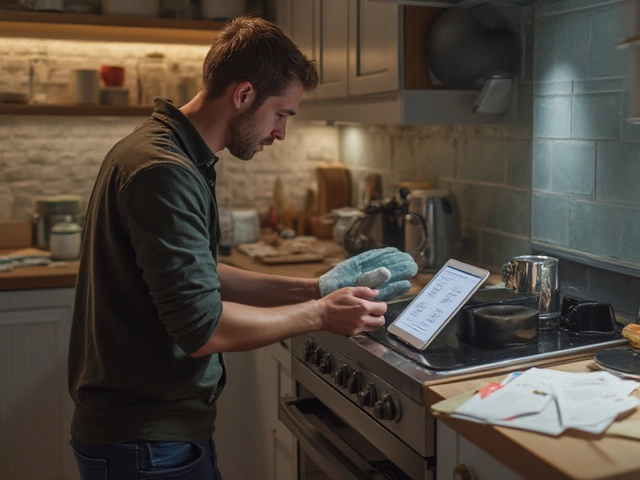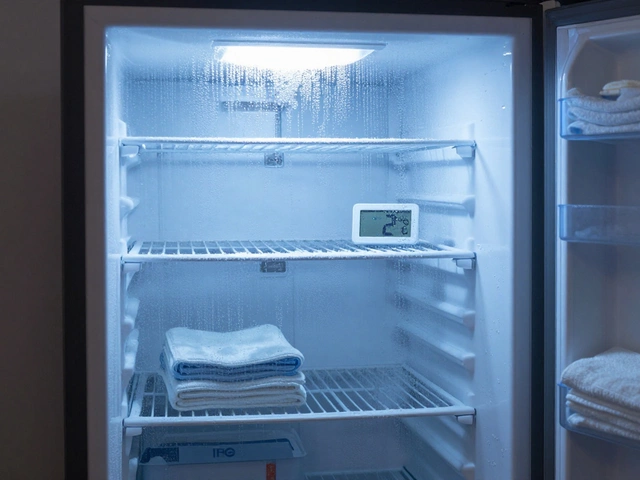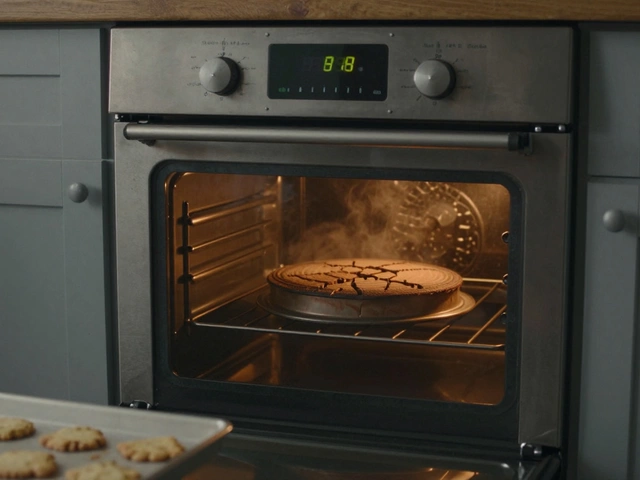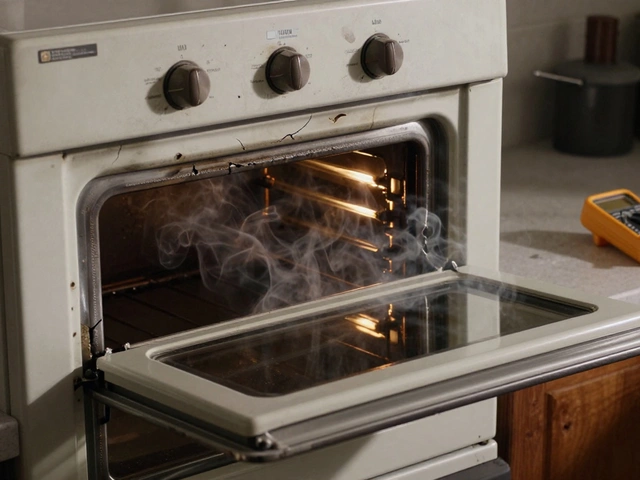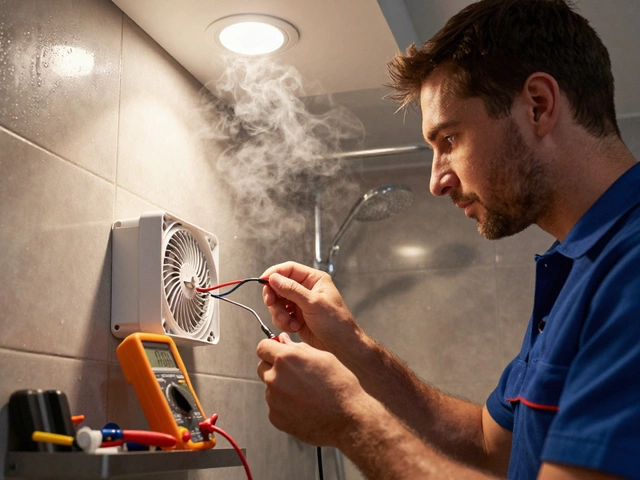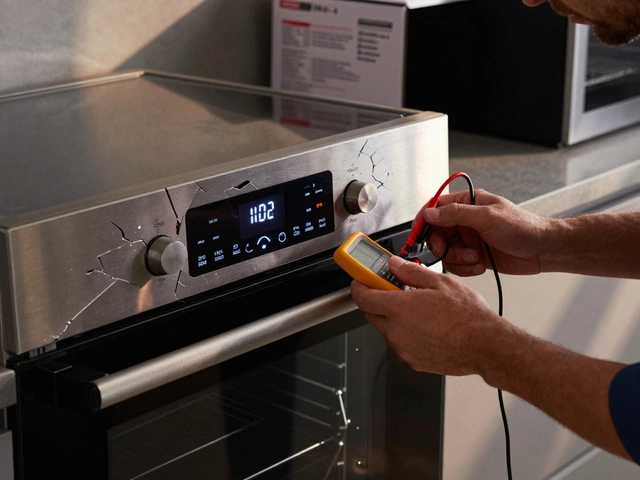When the ice cream turns to soup or your peas start sweating in the middle of a New Zealand winter, you know something’s off. Freezers have one job, and when they suddenly quit, it feels like a real betrayal. No warning, no weird noises, just silence—or maybe a faint click, and then your groceries start going limp. What's behind this sudden freezer mutiny? It's never just "one thing." Freezers are surprisingly complex, and the trouble can hide almost anywhere. The real kicker is that most people won’t spot the problem until it’s almost too late—either because everything’s hit room temp or there’s a puddle creeping across the kitchen floor. Let’s get stuck into the main reasons freezers just give up the ghost overnight.
Common Reasons a Freezer Stops Working Suddenly
First up, don't feel bad—it happens. Even the most reliable machine throws a tantrum once in a while. The most common culprit? Power supply issues. Sometimes a freezer’s plug gets knocked loose (especially in busy households or when cleaning behind appliances). In New Zealand, storms and surges can blow a fuse or trip a circuit. Sometimes it’s as simple as the outlet failing; people have called for repairs, only to learn the freezer works fine in another socket.
Moving past the obvious, the thermostat could have failed. Freezers rely on a little sensor to tell the cooling system when to cycle on or shut off. When this fails, your freezer assumes perpetual holiday mode and stops working. This problem is more common in freezers over five years old. Thermostat replacements are straightforward for most repair techs, but not a typical DIY job—especially if you don’t like messing with wires.
Compressor problems are the heavy hitters. If the heart of the freezer—the compressor—fails, cold air stops moving altogether. Sometimes the compressor may still be humming, but it's not pumping refrigerant. It’s a sign of internal wear, often after about 8-12 years of age. Signs of a dying compressor can include strange clicking noises (as it tries to start and fails) or a warm, yet running, freezer. New Zealand appliance stores report that many people mistake these early warning ticks for normal "settling sounds" or even the neighbours next door, until they find their food spoiled.
Then you’ve got a dodgy start relay. This is like the jump-starter for the compressor, and when it fails there might be a click, but no cold comes out. Luckily, relays can be tested and replaced for far less than a full compressor switch.
One sneaky issue is dirty condenser coils. Tucked behind or beneath the freezer, these coils dump heat outside. Get enough dust and pet fur on them, and your freezer overheats and shuts down as a safety reflex. It takes less than a year for coils to collect a thick layer of lint—especially if you have pets or your freezer sits against a wall. A quick vacuum out every few months can actually extend the appliance’s life. According to a 2023 New Zealand consumer survey, fewer than 25% of people clean their freezer coils each year.
Don’t underestimate temperature settings. Someone might have accidentally bumped or changed the dial (kids love to spin knobs), or the panel itself could be faulty. Sometimes settings reset after a power cut. Always double-check the dial or digital display before calling for help.
Door seal failure can be sneaky. Freezers are airtight because warm air is the enemy. A slip, tear, or bit of food stuck in the gasket lets heat seep in, overworking the system until it throws in the towel. If frost shows up fast inside or your door doesn’t shut firmly, give the rubber seal a good look.
Finally, defrost system failures. Freezers periodically melt frost to keep coils clear; if this system breaks, ice can build up and bubble into all sorts of problems—clogging air vents, blocking fans, and warming things up. The key suspects are a dodgy timer, heater, or sensor. Sometimes a forced "manual defrost" can reset everything, but not always.
| Failure Cause | % of Cases |
|---|---|
| Electrical/Power Issues | 37 |
| Compressor Failure | 19 |
| Thermostat Fault | 14 |
| Dirty Condenser Coils | 10 |
| Defrost System Problems | 9 |
| Door Seal Failure | 6 |
| Other | 5 |
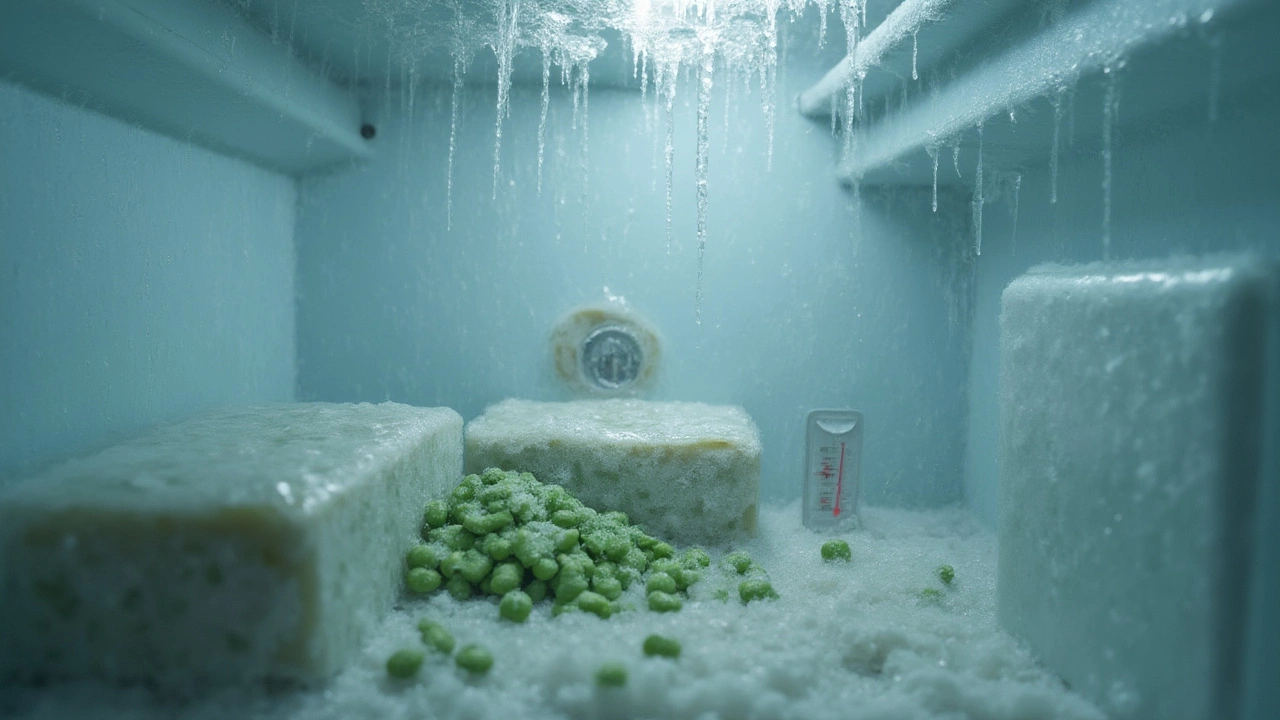
How to Troubleshoot a Dead Freezer
No one wants to lose a freezer full of kai. So before calling for backup, try a bit of detective work yourself. It could save you time, money, and a mountain of wasted food. Here’s what works—step by step:
- Check the power first: Plug a lamp or charger into the freezer’s socket. If it doesn’t work, check circuit breakers or fuses. Power cuts are common—especially after a good Wellington storm.
- Look behind the freezer. Has the plug been knocked loose? Pets and robotic vacuums are notorious for bumping cords in tight kitchens.
- Inspect the outlet for burn marks or a scorched smell. This could mean an overloaded circuit, so switch to a different plug (on another circuit) if possible.
- Feel the sides and back. If it’s hot to the touch, those coils are probably choking in dust—give them a careful vacuum. Use a coil brush for stubborn grime, and unplug the unit before you start.
- Peep inside. Is the freezer light on? If not, it’s a power issue. If yes, but it still isn’t cold, now you’re looking at internal parts or temperature settings.
- Spin the thermostat dial from coldest to warmest and back. Sometimes old dials get stuck or knock themselves loose (especially if someone slams the door hard).
- Check the door gasket. Close a slip of paper in the door and tug—if it slides out without resistance, your seal isn’t working right. Clean, adjust, or replace as needed.
- Listen for unusual sounds. Clicking or buzzing could point to the freezer not working due to a compressor or relay issue.
- Clear out any obvious ice or frost blocking vents or fans. If there’s a lot, unplug the freezer and let it fully defrost (with towels beneath for the melt).
- Sniff for weird odours. Electrical burning smells are a red flag for internal wiring faults.
If you manage to get it humming again, keep an eye on the internal temperature—using a fridge/freezer thermometer is handy. Food should stay at or below -18°C for safety. Anything above that for more than a couple hours, and you’re in the danger zone for spoilage, especially with meat or dairy.
If all else fails, call in a qualified appliance tech, especially if your freezer is under warranty. In New Zealand, many brands have 2-5 year guarantees on parts, but opening the machine yourself could void this protection. Keep your receipts and warranty cards handy; you’d be surprised how many people forget they’re covered.
Wellington’s humidity and salty sea air can take a toll on metal parts and electronics, so periodic checks are worth it—even if you haven’t had issues before.
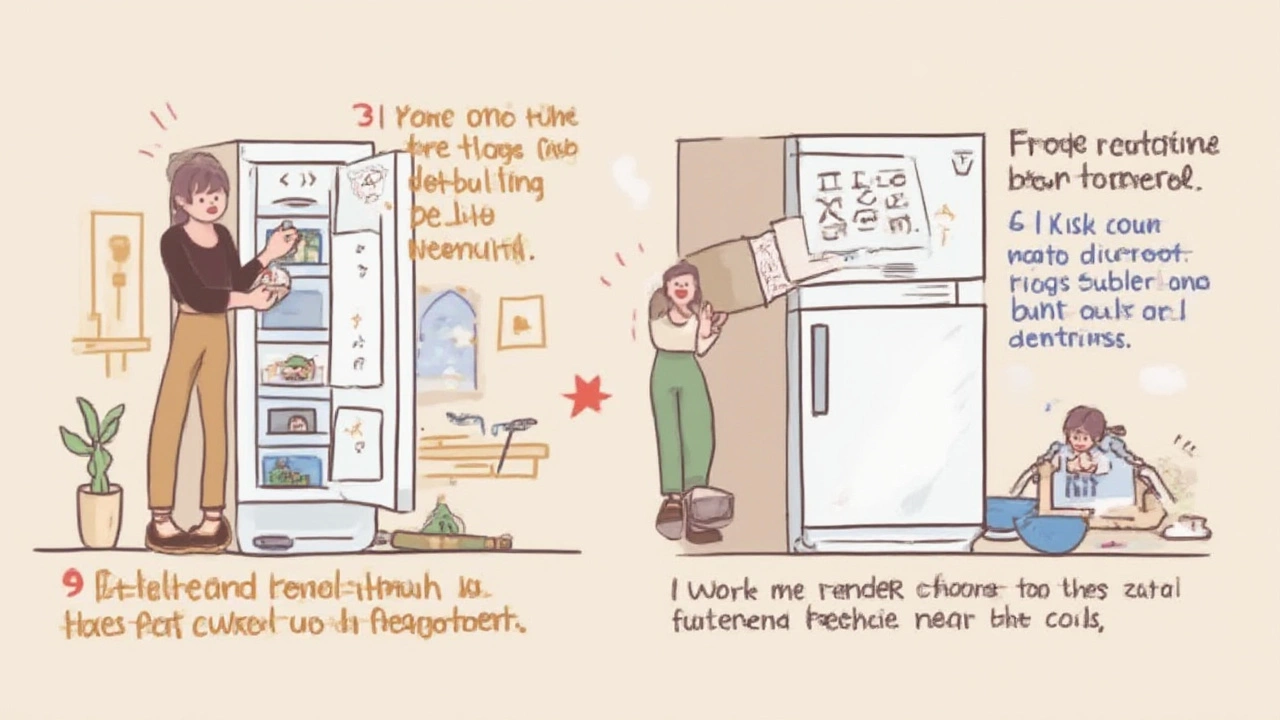
Prevention Tips to Keep Your Freezer Running Smoothly
So, you want less freezer drama in your future? There are easy ways to dodge most breakdowns. Start with the basics: clean those coils every three to six months—and don’t ignore the base panels and behind-the-back covers, where dust loves to live.
Don’t overload the freezer. Every time you cram in just one more pizza, you make it push harder to circulate cold air—leading to wear and ice build-up in all the wrong places. The sweet spot is having it around 70-80% full. If you’re not one for careful stacking, keep items off the air vents and fan outlets to avoid hot or thawed patches creeping in.
Keep an eye on temperature. Most modern freezers have digital displays, but analog ones can drift over time. Consider using a cheap fridge/freezer thermometer to keep tabs. If it creeps above -18°C, check for issues before your food checks out.
Monitor the door gasket every couple of months. Even a little tear can ruin the cooling magic. Wipe it clean regularly—especially if you spot crumbs, sticky spills, or pet hair stuck to the seal. An easy trick: shine a torch inside at night and see if light leaks out the seam.
If you have frequent power cuts in your area (hello, New Zealand winter storms), invest in a surge protector or a power backup unit. This can save you a costly compressor replacement down the line.
Once or twice a year, give your freezer a full defrost, even if it’s "frost-free." This rids the system of built-up ice and lets you clean out forgotten food hiding in the back. It also gives you a chance to check for smells, leaks, or signs of pest trouble (sometimes rodents chew wires behind units, especially in older homes).
Pay attention to noises. Most freezers hum quietly, but loud clicking, buzzing, or 'short cycling' (where it turns on and off quickly) are the first real signs the compressor or relay is getting tired. Record these sounds to show your repair tech—they'll thank you for it.
- Keep freezers away from direct sunlight or heat vents—both stress the cooling system.
- If space allows, pull your freezer out from the wall by a few centimeters for better air flow across the coils.
- Check user manuals for model-specific care. Some newer models even have built-in "cleaning modes" or alert lights to remind you when to check parts.
A quick tip for new appliance shoppers: energy-efficient models with inverter compressors tend to be more robust and handle power fluctuations better. They can also cut electricity bills by up to 20%, which adds up fast in big households.
Freezers have quietly kept Kiwis fed and happy for generations, but like all machines, they need a little love to avoid throwing a fit at the worst possible time. Armed with the right knowledge (and a clean set of coils), you can make sure your next freezer drama is averted—or at the very least, have a plan when things start to go sideways.



